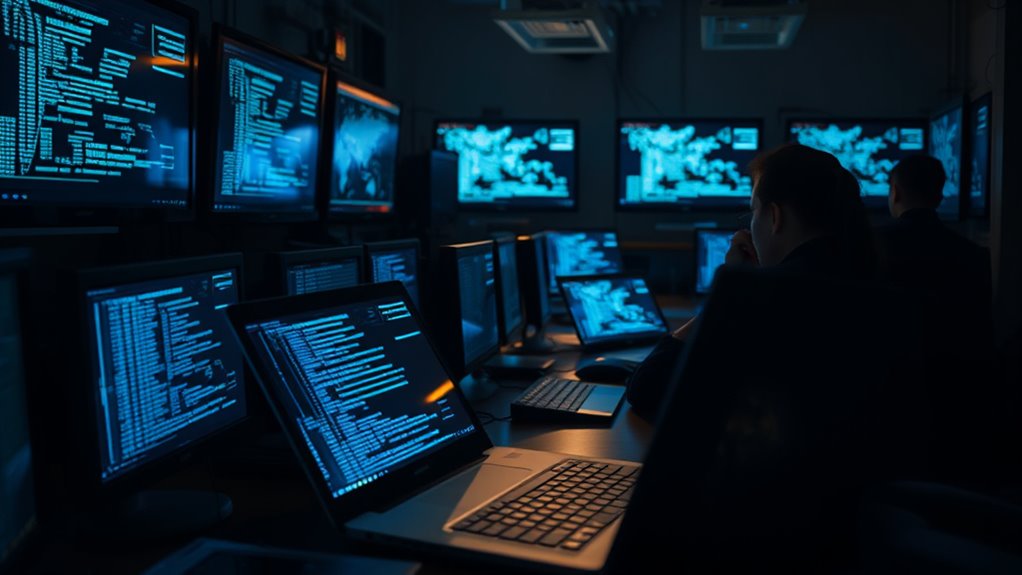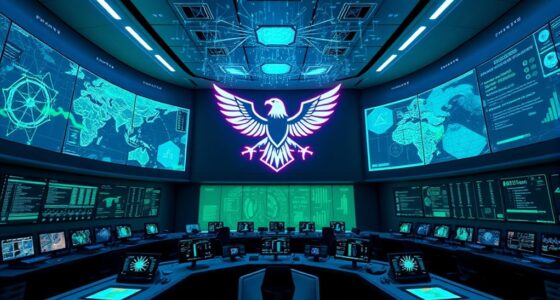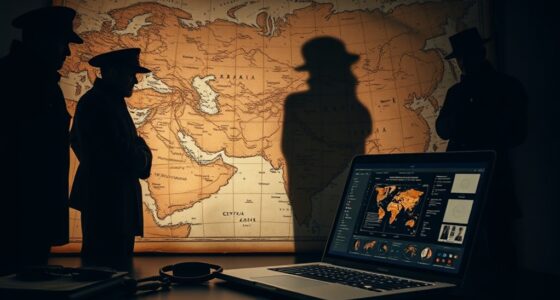Stuxnet marks a turning point in cyber warfare, showcasing how a U.S.-Israeli collaboration developed a weapon that could inflict physical damage through digital means. It targeted Iran's nuclear program and utilized multiple zero-day exploits, highlighting vulnerabilities in cyber-physical systems. This incident transformed cybersecurity by prompting stronger defenses and revealing the potential for AI-driven espionage. The legacy of Stuxnet raises ethical questions about accountability in cyber warfare, which you'll find fascinating as the story unfolds.
Key Takeaways
- Stuxnet's success demonstrated the potential of cyber weapons to cause physical damage, influencing the development of AI-driven espionage tactics.
- The use of sophisticated zero-day exploits in Stuxnet highlighted vulnerabilities in both software and cyber-physical systems, prompting a shift towards AI in cybersecurity.
- Stuxnet's unintended spread raised concerns about the unpredictability of cyber weapons, leading to increased interest in AI's role in both offense and defense.
- The ethical implications of AI in espionage were underscored by Stuxnet, challenging accountability and privacy in cyber warfare scenarios.
- Stuxnet's legacy spurred nations to enhance their cybersecurity measures, paving the way for advanced AI-driven predictive modeling to anticipate future threats.
The Origins of Stuxnet and Its Development
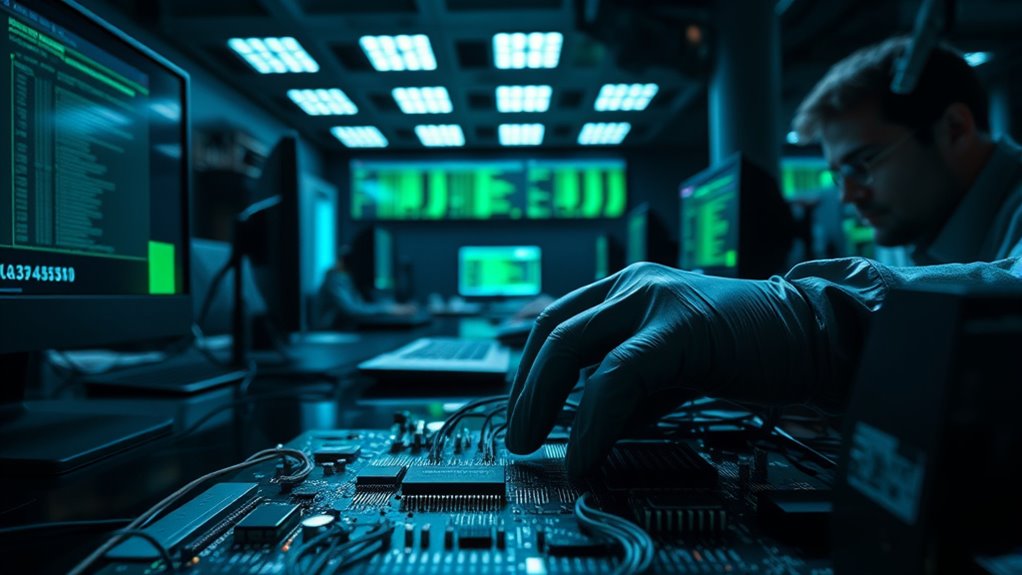
When you consider the origins of Stuxnet, it's clear that this sophisticated piece of malware was a product of intense collaboration between the U.S. and Israel around 2005 or 2006.
Designed to disrupt Iran's nuclear program, Stuxnet specifically targeted Siemens PLCs controlling centrifuges at the Natanz facility.
The malware's development likely involved a skilled team of ten coders over two to three years, showcasing the resources of nation-state actors.
Stuxnet exploited multiple zero-day vulnerabilities in Windows, including a print spooler bug, to infiltrate industrial control systems while evading detection.
Code-named Olympic Games, this operation initiated under President Bush and continued under Obama marked a significant shift in cyber warfare strategy, aiming for disruption without direct military conflict.
The Infection Mechanism and Operational Tactics
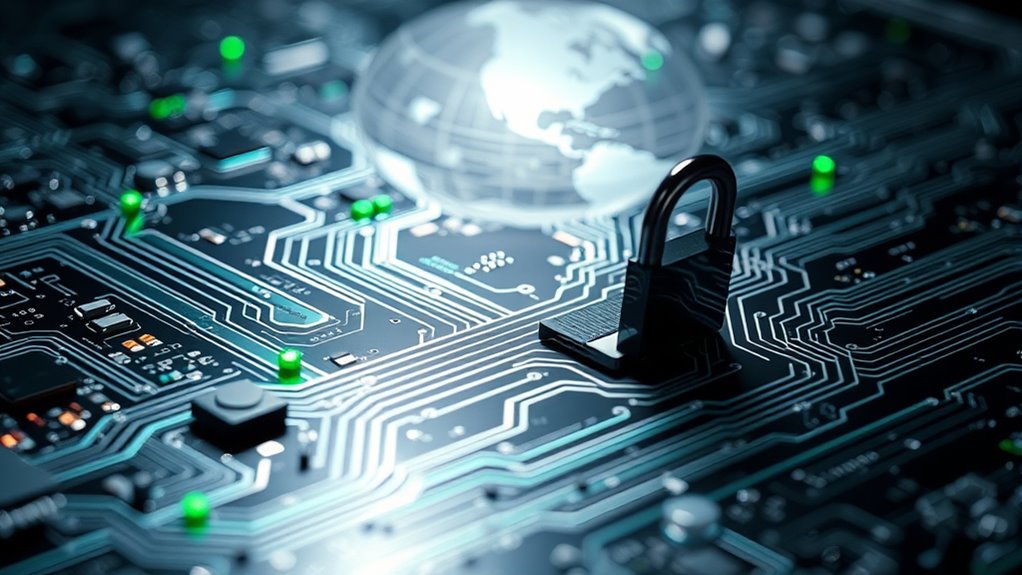
Although Stuxnet's sophisticated design makes it seem invincible, its infection mechanism relied heavily on physical access to the targeted systems. This malware primarily spread through infected USB thumb drives, targeting air-gapped systems at Iran's Natanz facility.
Stuxnet employed multiple zero-day exploits in Windows and Siemens PLCs, showcasing its advanced capabilities. Its operational tactics involved intercepting communications between the Siemens PLCs and centrifuge operations, cleverly renaming and replacing library files to evade detection.
Additionally, Stuxnet utilized rootkit functions to mask its presence, complicating security responses. With a modular design, the malware could adapt and update without internet access, ensuring its stealth and effectiveness in this unprecedented cyber warfare campaign.
The Impact of Stuxnet on Global Cybersecurity
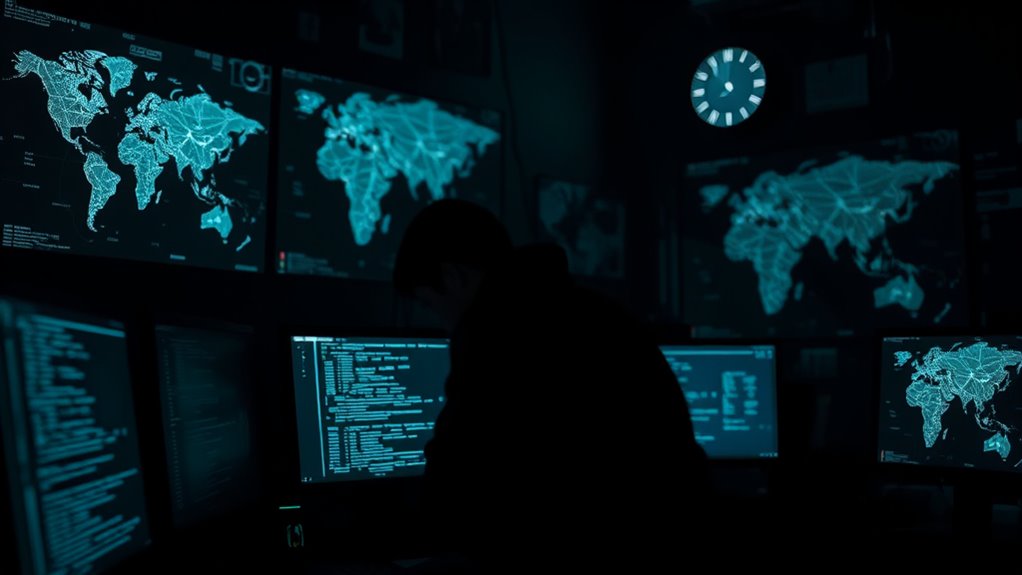
Stuxnet fundamentally transformed the landscape of global cybersecurity, illustrating how cyber warfare could inflict real-world damage on critical infrastructure. This malware specifically targeted Iran's nuclear program, showcasing the effectiveness of cyber weapons in disrupting national security.
Its use of multiple zero-day exploits highlighted vulnerabilities, prompting a vital shift in how nations approached cybersecurity. The incident spurred collaboration between private security firms and government agencies to enhance protection against similar threats.
Stuxnet's unintended consequences, including its spread beyond intended targets, emphasized the need for robust cybersecurity measures. As discussions surrounding AI espionage and cyber-kinetic attacks grew, nations recognized the importance of strengthening their defenses against evolving cyber threats, reshaping the future of global cybersecurity. Furthermore, the incident has raised critical ethical considerations in AI technology as nations grapple with the implications of integrating AI into their defense strategies.
The Legacy of Stuxnet and Future Cyber Warfare

The impact of Stuxnet continues to resonate in the domain of cyber warfare, shaping how nations approach their cybersecurity strategies. Recognized as the first true cyber weapon, Stuxnet demonstrated malware's potential to inflict physical damage, particularly targeting the Iranian nuclear program.
This sophistication, utilizing multiple zero-day exploits, revealed vulnerabilities in cyber-physical systems, prompting countries to bolster their defenses against state-sponsored cyber warfare. The worm's unintended spread raised concerns about the unpredictability of cyber weapons within a geopolitical context.
As techniques from Stuxnet are adopted by various malicious entities, we're witnessing a shift toward AI-driven espionage tactics, highlighting the ongoing evolution of cybersecurity challenges and the need for robust countermeasures in an increasingly digital battlefield. Additionally, the rise of predictive modeling in cybersecurity will play a crucial role in anticipating potential threats and enhancing defense mechanisms.
Ethical Implications of AI in Espionage
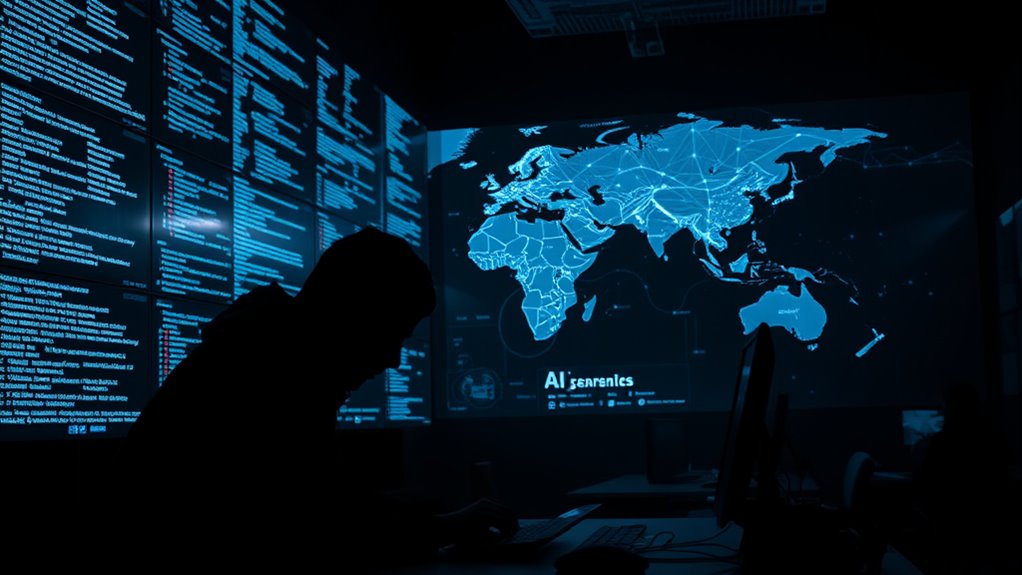
As nations increasingly turn to AI for espionage, they face a complex web of ethical dilemmas. The legacy of Stuxnet underscores the need for accountability, as cyber weapons can wreak havoc without direct military confrontation. You must consider how AI can infringe on privacy rights, gathering data without consent. The collateral damage from AI-driven attacks raises questions on how to protect civilian infrastructure. Furthermore, the introduction of Intelligent Tutoring Systems into educational settings exemplifies the dual-edged nature of AI, highlighting its potential for both positive and negative impacts on society.
| Ethical Dilemma | Impact on Society | Considerations |
|---|---|---|
| Accountability | Erosion of trust | Attribution of attacks |
| Privacy Rights | Data misuse | Consent and protection |
| Collateral Damage | Unintended harm | Safeguarding civilians |
Navigating these issues is essential for maintaining ethical standards in international relations.
Frequently Asked Questions
How Does Stuxnet Compare to Traditional Espionage Methods?
Stuxnet's approach differs markedly from traditional espionage methods. Instead of human spies gathering intel, it uses sophisticated code to infiltrate and disrupt systems.
You see, while traditional methods often rely on deception and physical access, Stuxnet operates remotely, targeting specific infrastructure.
It's a blend of cyber warfare and intelligence, showcasing how technology can achieve objectives without direct confrontation. This shift raises questions about the future of espionage in an increasingly digital world.
What Countries Have Developed Similar Cyber Warfare Capabilities?
Did you know that over 70 countries have active cyber warfare programs?
Nations like Russia, China, and the United States have developed sophisticated capabilities for offensive cyber operations. These countries invest heavily in technology to infiltrate systems, gather intelligence, and disrupt critical infrastructure.
You'll find that Israel is also a key player, showcasing its prowess in cyber tactics.
As digital landscapes evolve, more nations are likely to join this growing arena of cyber warfare.
Can AI Be Used for Defensive Cyber Strategies?
Absolutely, AI can be a game-changer for defensive cyber strategies.
You can leverage AI to quickly analyze vast amounts of data, identify unusual patterns, and detect potential threats before they escalate. By automating threat detection and response, you'll improve your organization's security posture.
Plus, AI can adapt to evolving cyber threats, learning from past incidents to enhance future defenses. It's a proactive approach that helps you stay one step ahead of attackers.
What Are the Legal Ramifications of Ai-Driven Cyber Espionage?
Did you know that around 95% of cyber breaches are caused by human error?
When it comes to AI-driven cyber espionage, the legal ramifications are complex. You're looking at issues like privacy violations, intellectual property theft, and potential international law violations.
As AI tools evolve, regulations struggle to keep pace, leaving you in a legal gray area. Maneuvering these challenges requires understanding both technology and law to mitigate risks effectively.
How Can Individuals Protect Themselves Against Cyber Warfare Threats?
To protect yourself against cyber warfare threats, start by keeping your software up to date.
Use strong, unique passwords and enable two-factor authentication wherever possible.
Be cautious with unsolicited emails and links, as they might contain malware.
Regularly back up your data to safeguard against ransomware attacks.
Consider using a reputable VPN for secure browsing.
Finally, stay informed about the latest cyber threats and best practices to enhance your online security.
Conclusion
As we navigate the digital sea, remember Stuxnet's stormy waves that reshaped our course. Just like a shipwreck reveals treasures, its legacy uncovers the dual-edged sword of AI in espionage. While we sail toward new horizons, we must not forget the lessons of the past. Embracing technology without wisdom can lead us into treacherous waters. So, steer your vessel with caution, for the winds of innovation can either guide you to safety or pull you into the depths.
